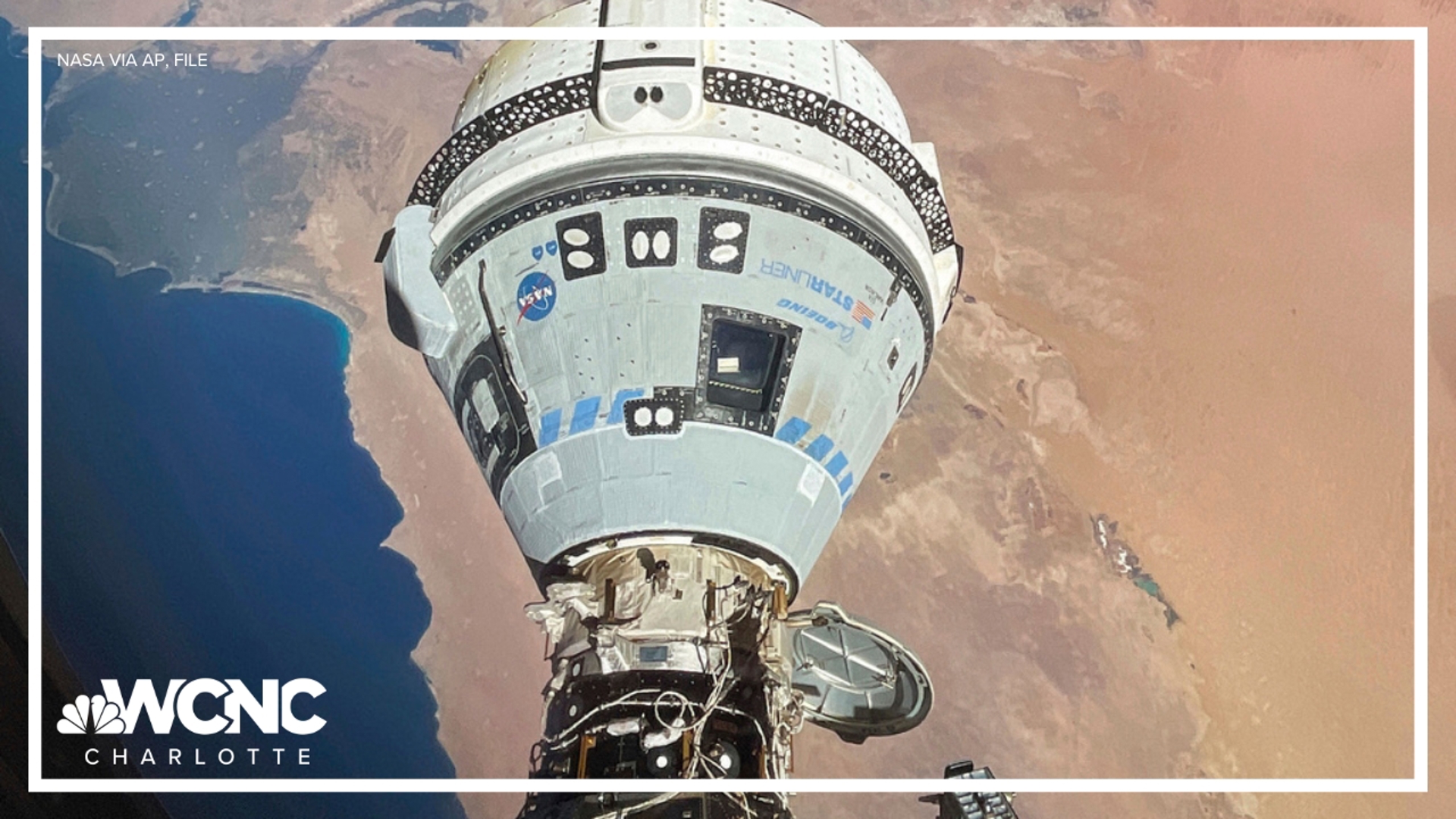HOUSTON — If the thrusters on the troubled Boeing Starliner fail to ignite when the uncrewed spacecraft detaches from the International Space Station, NASA says there is no need to worry.
"The first thing that happens when with the hooks [detach] on the NASA docking system is there's a couple of springs that kind of push the vehicle away," Steve Stich, the manager of NASA's human space flight program, said during a news conference on Wednesday. "So it will immediately have clearance."
Stitch was discussing whether there could be any threat to the International Space Station if flight computers or thrusters malfunction.
"So we don't really expect any issues with the thrusters near station," Stich said. "And then we get away very quickly and once we're on that trajectory, we're safe from the space station.
Stitch was addressing this concern because the spacecraft had major problems during its recent test missions including failed thrusters and helium leaks.
Ongoing troubleshooting ultimately lead NASA to a decide to keep the mission's two astronauts, Butch Wilmore and Suni Williams, on the International Space Station. Instead of flying home with the craft on Friday, they will spend six additional months on the space station. No one will be onboard when the spacecraft departs for Earth.
Despite appearing optimistic during a news conference Wednesday that the spacecraft -- without humans aboard -- would make it safely back to Earth on Friday, the recent problems were still enough for NASA to keep the astronauts aboard the ISS. The spacecraft will be flown home using both an onboard computer system and Boeing's controllers back on Earth.
Starliner’s woes began long before its latest flight.
Bad software fouled the first test flight without a crew in 2019, prompting a do-over in 2022. Then parachute and other issues cropped up, including a helium leak in the capsule’s propellant system that nixed a launch attempt in May. The leak eventually was deemed to be isolated and small enough to pose no concern. But more leaks sprouted following liftoff, and five thrusters also failed.
All but one of those small thrusters restarted in flight. But engineers were perplexed by ground testing that showed a thruster seal swelling and obstructing a propellant line. They theorized the seals in orbit may have expanded and then reverted to their normal size. Officials said the results marked the turning point, as their concerns grew.
With all the uncertainty about how the thrusters might perform, “There was too much risk for the crew," Stich told reporters last month.
Mission officials could decide not to detach Starliner from the space station on Friday for any number of reasons, including problems with the weather back on Earth. If any issues arise during Starliner's return to Earth, NASA officials on Wednesday said the spacecraft could safely orbit "for days."
"If it needed to loiter, it's got that capability," Stich said. "The only limiting consumable would be the thruster [and] the propellant."
NASA hopes it won't come to that. If all things go as planned, the uncrewed flight home should take about six hours.
Wilmore and Williams will remain aboard the station and return home in February 2025 aboard the SpaceX Dragon spacecraft with two other crew members assigned to NASA’s SpaceX Crew-9 mission. Two other crew members, previously assigned to the Crew-9 mission, will stay back on Earth in order to make room for Wilmore and Williams.
Crew-9 will fly SpaceX's Dragon spacecraft, which has been shuttling astronauts to space since the discontinuation of NASA's space shuttle program. NASA has been intending to have two private vendors - SpaceX and Boeing - as options for spaceflight. The ongoing issues with Boeing's Starliner has made it unclear when Boeing could enter the regular six-month rotation currently being supported by SpaceX.
Weather permitting, the uncrewed Boeing Starliner spacecraft will depart from the space station at approximately 6:04 p.m. EDT Friday, Sept. 6.
NASA and Boeing are targeting approximately 12:03 a.m., Saturday, Sept. 7, for the landing at White Sands Space Harbor in New Mexico.
If NASA decides to postpone Friday's attempt to return to Earth, backup attempts are possible every few days.
The Associated Press contributed to this report

